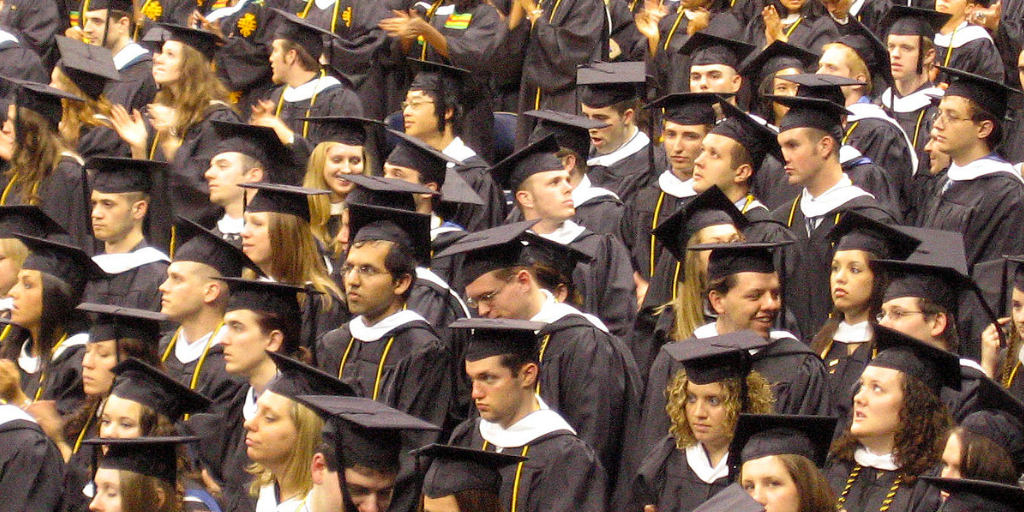On Helping the Undergraduate and Graduate Students
We live in an information-rich, theory poor era. In the absence of a theory, the abundance of information can even become confusing. Arthur Schopenhauer, this German philosopher, says while reading a lot of books might make certain people very resourceful, but it would confuse some others. Using an analogy, paraphrasing, he said, a strong young soldier wearing armour becomes invincible, but if a weak and sickly person wears it, his knees will buckle under its weight. He concludes that a mind that is not able to sort out the information one gets from reading too many books might become more confused, analogous to weak people wearing heavy armour. In the absence of sound theories would render people incapable of getting any meaningful understanding from such information. Hence, despite the preponderance of information in the realms of art, religion, philosophy, psychology, sociology, human sexuality, and politics, all of them still conceal their mysteries, as we shall see. The absence of cohesive theories on the human has made it impossible to grasp why the mind drives people in such directions. Mark Abraham’s studies on the structure and function of the human titled as, The Interactions Between Instincts and Intellect, and Their Impact on Human Behavior, helps fill some of this void. Objective theories matter.
For example, in the course of millennia, worldwide, over 100 billion people have embraced different religions, yet the mysteries of faith persist. Humans have been relishing arts for the past 40000 years. No one has explained why this paragon of intelligence and purposeful being, man, gets so engrossed in making strange noises in the name of singing or making frivolous moves in the name of dancing. Why do we love stories, knowing that they are devoid of any element of truth? Similar unanswered questions exist for all arts. Hence, we have been relishing arts for so long without knowing why we so love it. In the realm of sexuality, people fall madly in love, eagerly commit to a monogamous relationship through marriage, and then, over 36% of them practice polygamy through extramarital sex. Being simultaneously polygamous and monogamous renders our species alone sexually confused. Yet many psychologists have been graduating for years worldwide, but they cannot explain any of these human phenomena because we live in theory a poor era. Indeed, our understanding of the human mind is at its infancy. And the abundance of information in the absence of sound theories has failed to educate us.
People always have wanted to know what it is to be human. While there is no shortage of answers, in the absence of any satisfying answer, the question persists. To answer this question, we must find our place in the mix of other beings. I suggest that because instinct alone governs all animals, their mind is a single polar entity. Still, the human mind consists of instincts and intellect, and that makes solely the human mind bipolar. Thus, to be human is to have a bipolar mind. Because instinct and intellect coexist, this interlocks them permanently, and they mutually affect each other’s function. Thus, we must study them together, as one could not adequately understand in the absence of the other.
The instinctual part of the human mind consists of 17 different human instincts. These same instincts drive all humans, although the intensity of each of them varies from one person to another. Each instinct blindly strives for its unique sort of pleasure, glory, and satisfaction, and nothing else. Each person’s strongest instincts induce the deepest pleasure for them. When any of these instincts is exceedingly potent in anyone, it creates irresistible temptations that blind peoples’ reasoning faculty and lead them to their gravest mistakes, demonstrable through endless real examples. Despite the strong marks of instincts in the human psyche, some psychologists still refute it. Hence, we fail to understand the function of both instincts and human intelligence and humanity at large. Thus, dismissing instinct as a phenomenon is one of the reasons why human enigma remains unsolved. These 17 human instincts are as follow in no particular order:
- tribalism
- Territoriality
- Sexuality
- Fear
- Aggression
- Adventure
- Greed
- being social
- the maternal/paternal instinct
- divulgence
- dominance/will to power
- laziness
- survival
- politicking, Machiavellianism
- language
- curiosity
- Rhythm.
The human intellect divides into the Utilitarian Intellect and Moral Intellect, a total of 19 different mental forces. The utilitarian intellect comprises the following abilities, reasoning, learning, imagination, creativity, calculation, assessment, science, technology, inventions, discoveries, and contemplation. These are mental tools at human disposal that people use to solve problems and to achieve objectives. However, human pursuits are neither exclusively good nor evil, but a combination of both. Because this portion of the intellect takes no stance and avails itself to achieve both good and evil unconditionally and indiscriminately, it lacks personality and character. For example, it was human intelligence that invented the airplane that has profoundly contributed to human progress, and also found a way to use planes to savage thousands of innocent lives on 9/11 in New York. Thus, humans’ intelligence devoid of character relentlessly growing makes poses the greatest danger against human civilization and demands earnest attention. Please read my blog, The Dangers of Growing Mental Imbalance.
The third mental element is Moral intellect. Its sole function is the induction of all the beautiful human values of honesty, fairness, justice, kindness, compassion, selflessness, and humanity into human affairs. These attributes are unique to humans, and this reveals a phenomenal factor about being human. I argue that humans have gone through not one, but two parallel evolutionary processes. One is the general evolution, common to all beings. The second one is exclusive to humans that have developed the Moral Intellect to manufacture the abovementioned refined attributes unique to humans.
The 17 human instincts charge each person to use and abuse others to advance their causes at the expense of others. This unbridled selfishness is a recipe for perpetual conflicts and violence. Thus, the human brains, and therefore, the mind evolved to counterbalance the selfishness that the 17 primitive instincts engender in each person to make relative peaceful coexistence as social being possible for humans to survive. Otherwise, there would be endless violence would make social living impossible, and humans as a species could neither progress or even survive if we did not live socially. Hence, the emergence of moral intellect from within was an equalizing force that has helped human survival. The coexistence of selfish instincts and selfless moral intellect in the human mind is the birthplace of all human dualities. All our deeds stem from the joint function of these 19 mental forces. To decipher how they interact, we need to compare and contrast some of their properties.
This study reveals that instincts are unchanging, stagnant, and primitive, while intellect relentlessly grows. Instincts drive human behavior, but we apply the utilitarian intellect to achieve goals. Instincts emerge and function in the absence and vacuum of intellect as reasoning. However, intellect is pure thinking and contemplation, regardless of the quality of the thoughts. Instincts being primeval are raw, domineering, and more sensitive than intellect that is secondary to instinct, and we have gained through time. Our bipolar mind reveals that all human endeavors divide into two distinct categories of behavior and achievements. Our instincts drive our behavior, and our intellect helps us achieve our objectives. Because instincts do not change, humans’ core behavior remains unchanged.
For instance, thousands of years ago, our ancestors lied, cheated, stole, raped, killed, formed militaries, and fought wars, all of which have continued to now. A certain instinct drives each of these modes of conduct. However, the same ancestors traveled on foot and could only talk face to face, to use but two examples. Today, people travel great distances in a short time and can speak from the opposite ends of the earth at will. This massive imbalance in human progress in the realms of astonishing achievement verses the unchanging behavior stems from the differences between the properties of instinct and intellect. Thus, the contrasting natures of the growing intellect and stagnant instincts result in an increasing imbalance in mind presented in the graph below. The constructive and destructive implications of this imbalance can never exaggerate it.
Briefly, on the constructive side, the strongest of these primitive instincts force our intelligence to relent its function in certain conditions, and lead even the brightest of humans to poor decisions and unjustifiable grave mistakes. This subconscious mental trend continues to pass undetected, and the mistakes it causes impair human progress at all levels. Knowing this would enable people to elevate their subconscious mind to a conscious level, defuse these mental forces, free their intelligence from the tight grip of their primitive instinct, avoid such mistakes, achieve more success and live a more prosperous and happier life. Extensive spread knowledge of this would increase the ambient human wisdom and happiness worldwide. On the destructive side, however, it this goes neglected, this growing imbalance would reach a threshold that human intelligence devoid of sufficient human wisdom to sublimate it would lead to utter self-destruction. The multiple marks of this are beginning to present themselves already.
This study has disassembled the human mind into its parts to study each part separately, just as they study human anatomies separately in medicine. The human mind had never been broken down into its different parts. Then, Mark painstakingly tried to sort out the properties, mission, and function of each of them. In the next step, he studied which mental force longs for what, and why they do so. Lastly, he tried to observe when these parts cooperate, and when they contradict one another. Learning these factors about the different aspects of mind, the dynamics of the human becomes clear, and we see why people do what they do in vastly diverse realms.
Otherwise, it is impossible to know what mental forces compel religion or sustains them. Likewise, we could never comprehend art without knowing what in mind longs for different brands of art such as music, paintings, poetry, dancing, the art of storytelling, and all the rest of them. This process has revealed this secret. Through this knowledge, I have divided art into three distinct categories of Rhythmic arts, Imitative Arts, and the Abstract art that already existed. All arts in each group are structured the same way, and each group of art relates to a particular mental force. Knowing this would help all artists in any category substantially to elevate their art to new levels. We get to learn why there is such a thing as Macro-Psychology and Micro-psychology. In that, each instinct induces the same drive in all people, such as fear, greed, sexuality, curiosity, laziness, tribalism, territoriality, aggression, dominance, and so on. As the intensity of each of these varies from one person to another, different people pursue different things with different determination, and that defines their behavior. All people having the same inclinations creates Macro-Psychology, while different people pursuing different objectives with different intensity creates Micro Psychology, and helps understand people better.
To use more examples, observing the contradicting forces that determine human sexuality unveils the paradoxes of human sexuality and solves its mysteries. Among other things, we get to understand the psychology of sexual fantasies. Besides an intellectual practice, it also helps us understand infidelity as human behavior that wrecks many families. Furthermore, we get to see why of all beings humans alone are simultaneously polygamous and monogamous, that thus the sexually confused. In the realm of politics, we see that Machiavellianism, trickery, and politics are first, and foremost a mode of conduct unique to humans that starts in childhood. Politics at the professional level that pertains to governments and politicians is a tiny portion of the world of politics. Hence, we see what makes humans political animal, as Aristotle asserted, and why virtually everyone worldwide dislikes politics and distrust politicians. Therefore, this study presents a new philosophy on politics and suggests changing the term, “Political Science,” for one cannot find any hint of science in it.
To use another example, this seemingly simple term of “wisdom” has become a difficult challenge for scholars to explain it. In that, a few years ago, Chicago University received a $5M grant to discern what wisdom is and how it could be acquired and applied to improve the human condition. About 50 great scholars diligently tried to solve this mystery. Years later, they could not even define what wisdom is, much less how to get it. Indeed, the list is long, but the point is clear. This first unifying theory of the mind deals with these and a few other subjects in depth that will help students studying any of these subjects as undergraduate or graduates students while presenting brand new concepts on these age-old subjects. Likewise, any new subjects arising in any of these fields could be more objectively and in a meaningful way interpreted. For it is theories that help people use information and make them useful. Recognizing the human mind as a bipolar entity is what presents the human mind in a different light.
A more important feature of this study is that the factorial mathematical formula shows that these 19 mental variables, (17 instincts, the utilitarian and moral intellect,) present themselves in 121,645,000,000,000,000 different ways. To grasp the enormity of this number, if you divide it by the number of the current world population, you get 17,000,000. The figures are rounded up. Thus, if the world population were that many times as many as it is, each person would still get a unique personality. Hence, we get a numerical account of the complexity of the mind. Thus, it is impossible to assess one’s personality in this complex web of the mind, much less understanding others in your personal or professional life without the use of modern technology. We have created a personality and behavior assessment test based on this study of the human mind. Ours is not the only one in the market, but all of the others have are based on the vague conventional understanding of human psychology. Two of the most popular of such tests are based on a 2400 years old theory by this Greek philosopher, Hippocrates. Being oblivious to the bipolar nature of the human mind, none of those tests in the market can accurately assess peoples’ personalities and behavior for the following reasons.
The three most popular personality and behavior assessment tests claim that the personality of all humans is one of four, five, or sixteen different types, depending on which company you choose. By implication, these theories would have to also apply to over 100 billion people who lived before us. Yet no one can come up with two names with identical personalities, if they are not identical twins, for they do not exist. This factor alone proves their inaccuracy, despite their popularity tests. However, our tests at MeetYourMind.com produce exclusive reports for each person, as each report is one of the astronomical numbers of personalities presented above. Each person’s character, fingerprints, and appearances are unique, and to claim otherwise is patently wrong.
Again, Peoples’ strongest instincts create irresistible temptations, blind their intelligence, and lead them to their gravest mistakes. Our tests measure the strength of these mental forces against each other and present them in a bar graph in descending order. The text in the report explains each of the 19 elements and how each impacts your life. People can use this knowledge to transform their lives. Two of the three most popular tests use only four mental features and disregards the most critical mental forces out, as if they do not exist or do not matter in human behavior. The factors such as sexuality, greed, laziness, aggression, tribalism, adventure, dominance, and so on, each of which defines a significant portion of human behavior. However, each of the 19 mental forces is a vital pillar of our tests. Hence, the three most popular tests cover only 33% of the different states of the human mind that our system covers. For a more in-depth comparison of our system to theirs, please read my blog, The Scientific Principles.
The more of the blogs you read, and the clips you watch, the more aspects of this study
you will learn. I hope this article correctly illustrates Arthur Schopenhauer’s precept that theories
matter significantly. Information is good, but without theory, it loses much of its usefulness.



